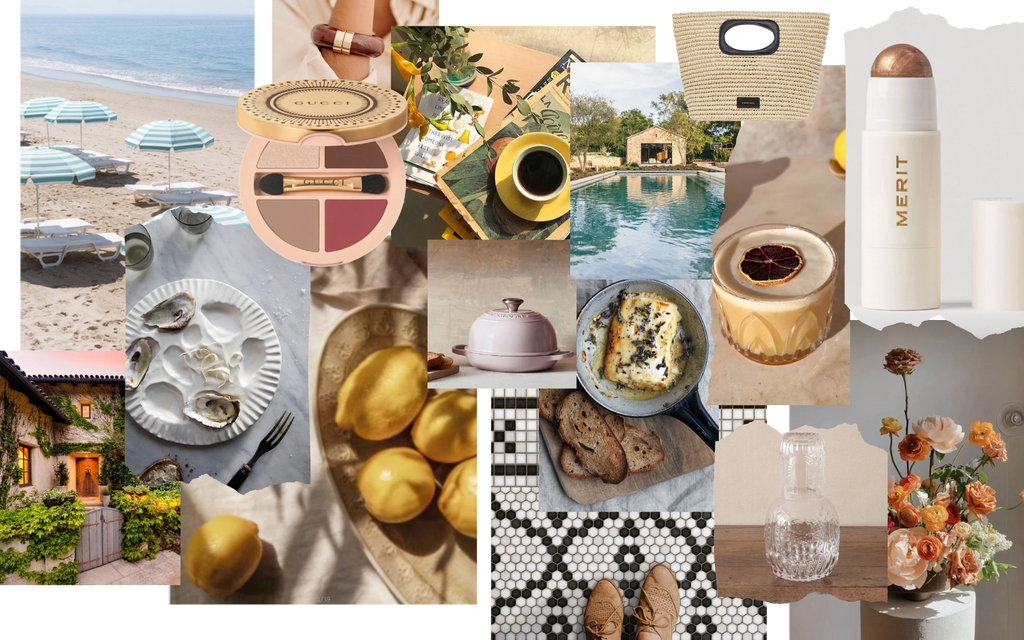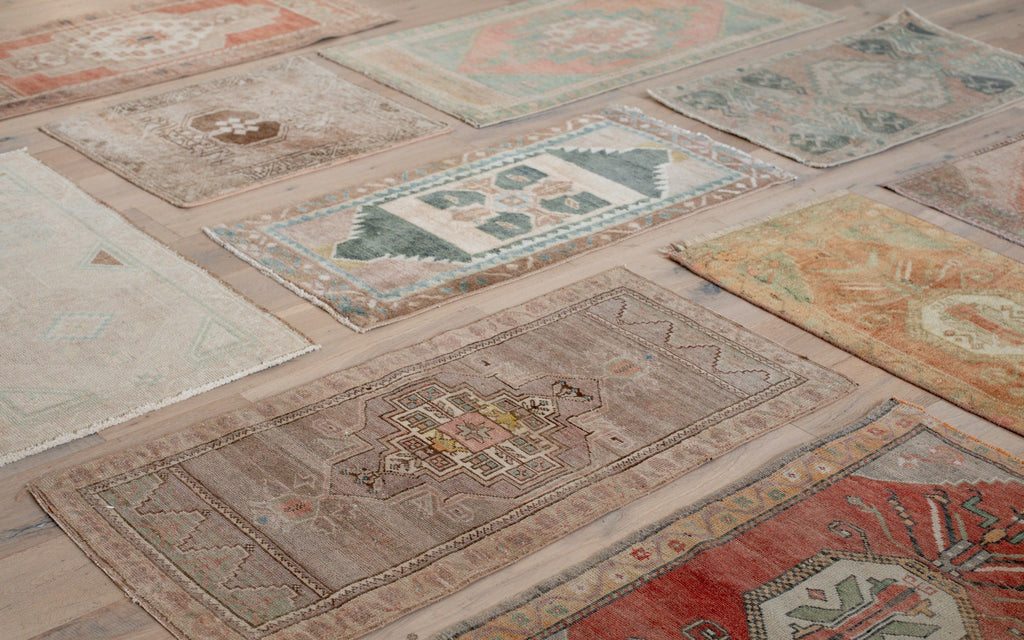At The Vintage Rug Shop, our passion is curating vintage rugs that each tell a unique story. From the intricate designs of Tabriz to the bold patterns of Heriz, we take pride in offering a wide array of styles that reflect the rich history and artistry of rug weaving. Among these woven treasures, Mahal rugs hold a special place in our hearts. With their distinctive blend of traditional Persian craftsmanship and timeless, organic design, Mahal rugs embody everything we admire in vintage textiles. In this post, we uncover the origins, distinct qualities, and enduring appeal of Mahal rugs and why they are such an iconic staple in the world of well-collected interior design.

Your Guide to Everything Mahal Rugs
Marked by playful rhythm and a hand-woven spirit, Mahals strike a rare balance between grounded and expressive.
.png?v=1748477553605)
The Allure & Origins of Mahal Rugs
Among the vast array of vintage rugs to choose from, Mahal rugs stand as archetypes of artistic brilliance and cultural heritage. Mahal rugs trace their lineage to central Persia, a region historically celebrated for its exceptional weaving tradition. Woven in the city of Mahallat, located in central Iran, these rugs are exquisite works of art that embody centuries of tradition, craftsmanship, and aesthetic refinement. These rugs emerged during the late 19th and early 20th centuries, a period when Persian craftsmanship reached its production peak.
What truly distinguishes Mahal rugs from other rug varieties is their uniquely relaxed and fluid design ethos. Unlike the rigid symmetry found in many Persian counterparts, Mahal rugs are known for having larger scale patterns, embracing a more organic, freeform style. The subtly imperfect, hand-drawn designs in Mahal rugs reflect the human touch—each line, curve, and motif bears the hallmark of the artisan's skill and creativity. This creative liberty is what creates a distinctive charm and enduring appeal in Mahal rugs.
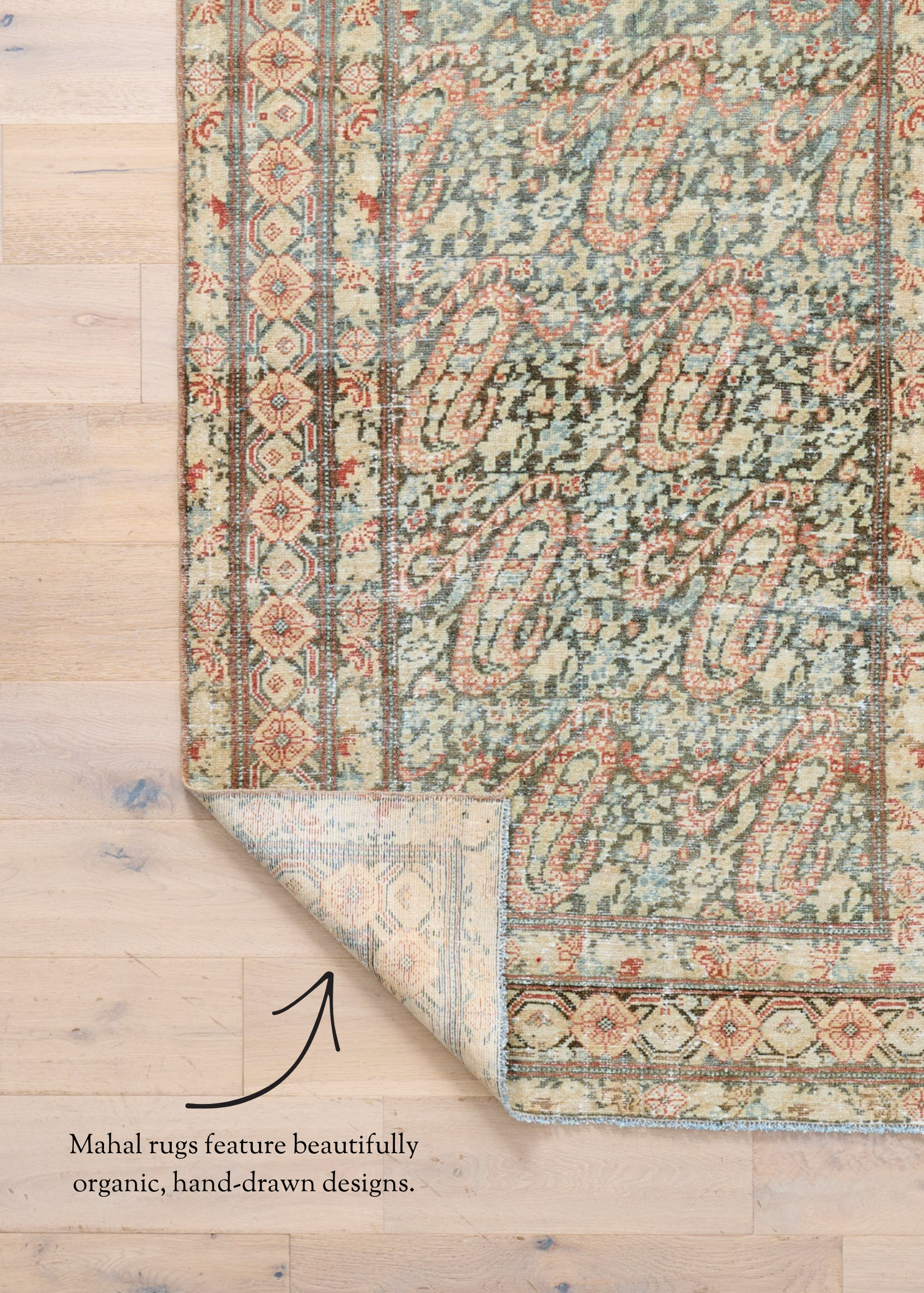
The Timeless Nature & Versatility of Mahal Rugs
Our admiration for Mahal rugs stems from their unparalleled ability to marry form and function. Iconic Mahal designs of large-scale floral motifs and grand medallions exude a sense of balance and harmony that is both bold and understated. This duality makes Mahal rugs highly adaptable to a variety of interior styles, from the most traditional to the modern. Furthermore, the passage of time only enhances their beauty; the natural dyes used in these rugs age gracefully, developing a patina that adds layers of character and sophistication, ensuring that each Mahal rug is a unique testament to the artistry of its weaver.
The versatility of Mahal rugs extends to their functionality within various spaces of your home. In the living room, they serve as the perfect statement-making foundation for creating a warm, inviting atmosphere. In the dining room, a Mahal rug not only enhances the aesthetic but also adds a grounding luxury that reinvigorates any gathering space. One of our favorites places to style a Mahal rug is in the bedroom– bringing a cozy, serene quality that transforms your sleeping space into a refined sanctuary.
In the realm of modern interior design, Mahal rugs have become coveted pieces, celebrated for their ability to infuse spaces with an air of elegance and history. Their bold yet balanced patterns provide a visual anchor, around which a room’s design can harmoniously evolve. Whether gracing the floors of a modern home or a classic countryside estate, Mahal rugs possess the versatility to complement and elevate any setting, making them indispensable to the well-collected eye.
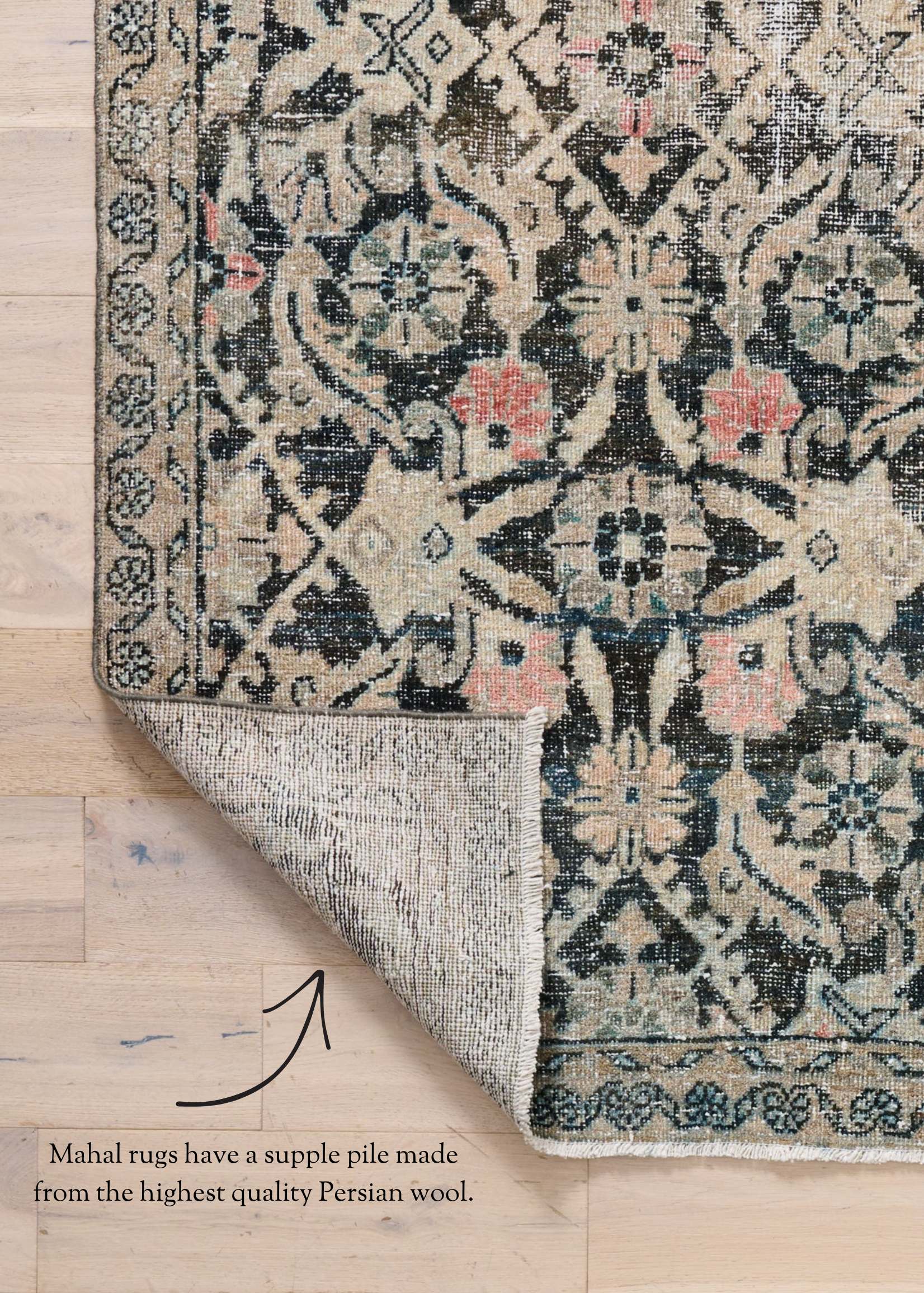
A Testament to Quality Craftsmanship
A key hallmark of Mahal rugs is their sumptuous pile, meticulously crafted from the finest quality wool. Sourced from sheep raised in the highlands of Persia, this wool is renowned for its resilience and luxurious feel. The pile is often dyed using age-old techniques involving natural, plant-based dyes, which add a depth of color and vibrancy that synthetic dyes simply cannot replicate. The result is a tactile experience that is as pleasing to the touch as it is to the eye—a physical embodiment of luxury underfoot.
EXPLORE VINTAGE MAHAL RUGS
Expert Tips for Identifying Authentic Mahal Rugs
While identifying an authentic Mahal rug can be a nuanced process requiring expert knowledge, there are certain tell-tale signs that can guide you:
QUICK TIPS
Natural Dyes: Genuine Mahal rugs are dyed using natural, vegetal dyes, which result in rich, layered colors with subtle variations that synthetic dyes cannot achieve.
Quality of Wool: The wool in an authentic Mahal rug should feel both soft and resilient, with a distinct luster that speaks to its high quality.
Design Characteristics: Mahal rugs are known for their expansive, open designs that often include large floral elements and medallions. The designs should exhibit a sense of balance and flow, deviating from strict symmetry.
Weave: The weave of a Mahal rug is typically less dense, contributing to a more supple texture that sets it apart from other Persian rugs.
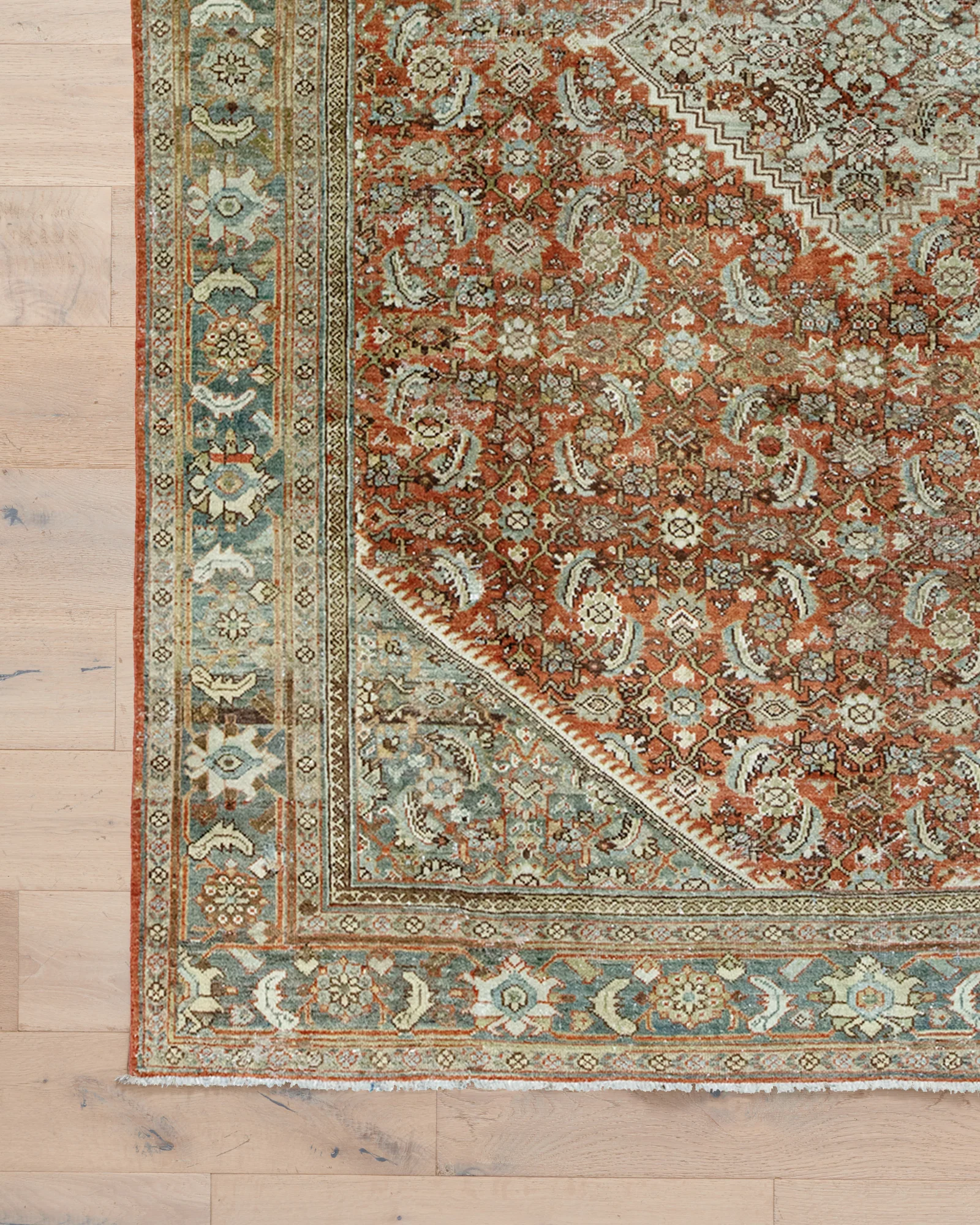
At The Vintage Rug Shop, we’re tellers of stories, history, and art through our curation of vintage rugs. Mahal rugs, with their rich Persian heritage and enduring design, represent everything we love about vintage rugs. Their timelessness, versatility, and imbued sense of artistry transcends any fleeting trend. These rugs bring more than beauty to a space—they carry with them the legacy of the weavers who crafted them and the cultures they reflect. We appreciate Mahal rugs for their elegance, their history, and their ability to transform a space, and we’re honored to share these treasures with those who value them as much as we do.
